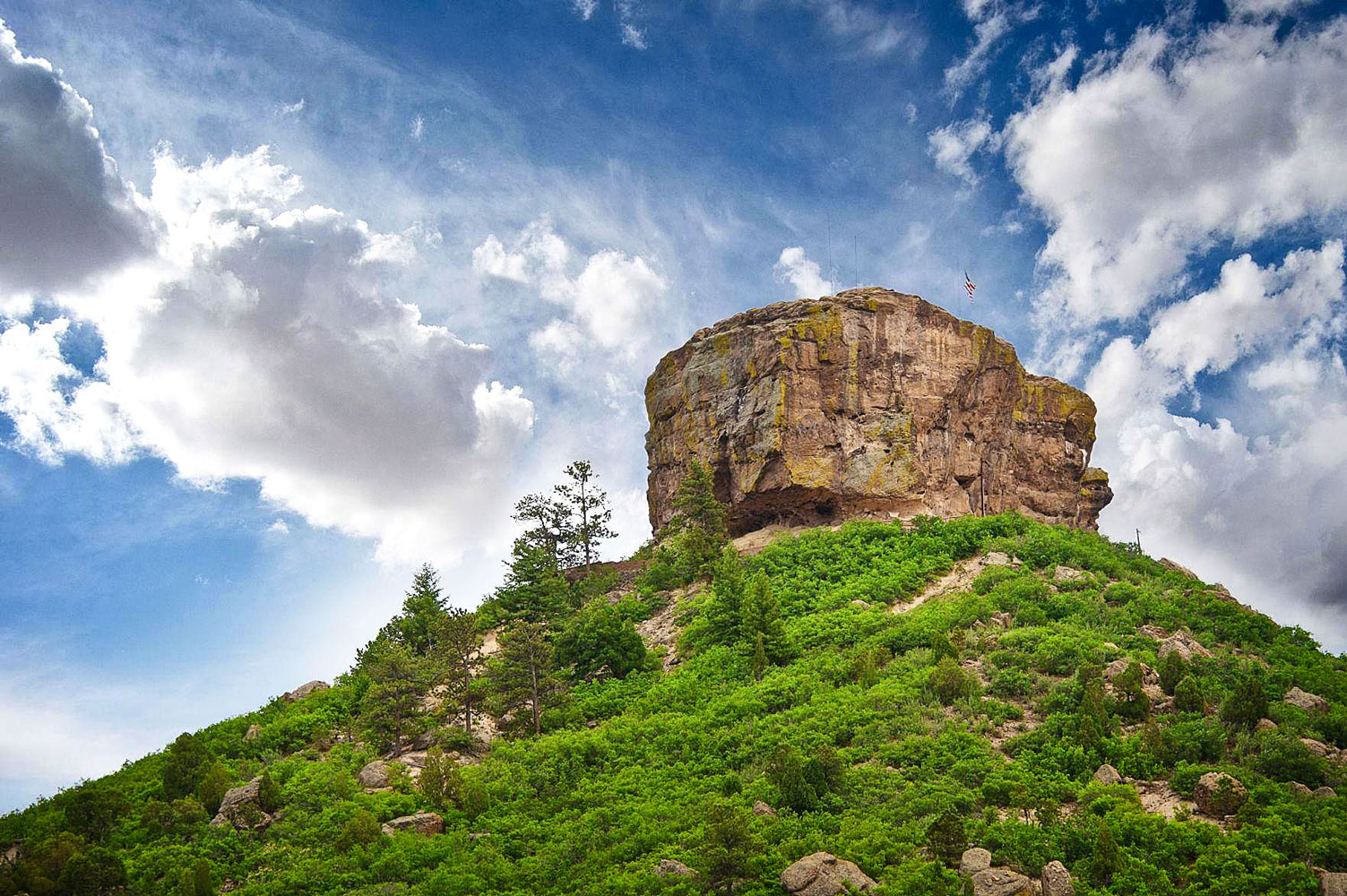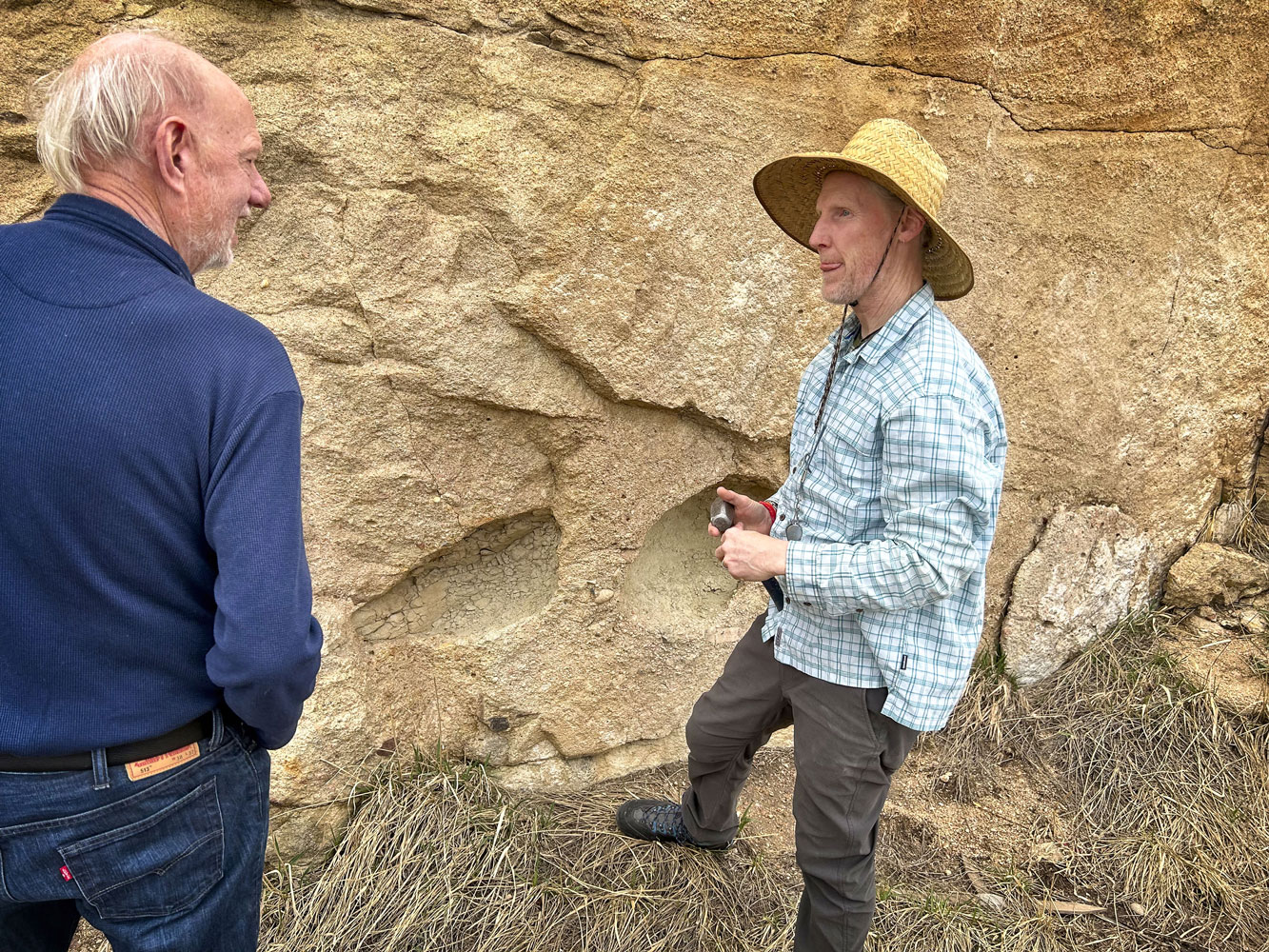Why Castle “Rock” doesn’t crumble

The Castle Rock is more than just the rock formation that signals the heart of Douglas County. It stands as a sign of many different things to different people. Whether it is a place you hike, pass by on I-25 or look forward to seeing lit up with the Christmas star come the holiday season, Castle Rock is always a reminder of where you are in the state of Colorado. You cannot miss it.
But why has it been able to stand the test of time? To survive the often-brutal forces of Mother Nature’s touch on Colorado and not erode? Why has it not begun to crumble?
Recently, Dr. Mark Longman, a geologist with the Denver Museum of Nature & Science (DMNS), was hiking Castlewood Canyon State Park in Franktown and noticed the bluffs were held up by conglomerate rock, a 34-million-year-old rock similar to Castle Rock and other buttes and mesas along the Front Range. This was unusual according to Longman because conglomerate rock is a rock that usually breaks down easily and does not make long-lasting, resistant ledges, bluffs or mesas. Curiosity piqued, Longman and two other colleagues, Joan Burleson and Dr. James Hagadorn at DMNS, launched a study. What they uncovered about Castle Rock (and the bluffs at Castlewood Canyon) is a rare find.
“Castle Rock and Castlewood Canyon State Park are iconic landmarks in Colorado’s landscape,” said Dr. Hagadorn, a curator of geology. “Generally, exposed sedimentary rocks in these areas would be prone to erosion and might crumble into rubble. The key to Castle Rock’s exceptional durability, it turns out, is that it is held together by a unique and captivating gem mineral: opal.”
Opal – the gemstone. (If you were ready to go digging, the opal is microscopic so cannot be mined.)
According to the study, a rock layer formed from mineral-rich debris from volcanic eruptions and groundwater that led to, over millions of years, a “cement” they discovered in the rock samples. It is the only discovery of something like this in Colorado thus far. The three published the work in a peer-reviewed journal so that other geologists could learn of this phenomenon, and hopefully discover other areas across the nation where this may have happened.
Hagadorn said, “The study not only deepens our understanding of the prominent castle-shaped butte for which Castle Rock is named, but adds a fascinating layer of understanding and knowledge about the geological history of the entire Denver region.”
To learn more, read the article published in the January edition of The Mountain Geologist at rmag.org.
The key to Castle Rock’s exceptional durability is that it is held together by a unique and captivating gem mineral: opal.

Dr. Mark Longman (left), a geologist with the Denver Museum of Nature & Science, discusses conglomerate rock with his colleague Dr. James Hagadorn (right).
By Karen Leigh; photos courtesy of Denver Museum of Nature and Science